Phasmids can be relatively large, ranging from 1 inch to over a foot in length. Females of the genus Phobaeticus are the world's longest insects, measuring up to 56.7 centimetres (22.3 in) in total length in the case of Phobaeticus chani, including the outstretched legs.[1] Females of the species Heteropteryx dilatata are the heaviest known phasmids, possibly weighing in excess of 65 grams.
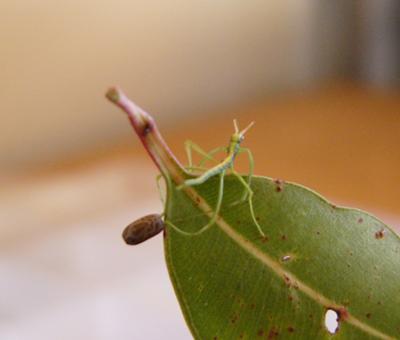 stick insect eggs
stick insect eggs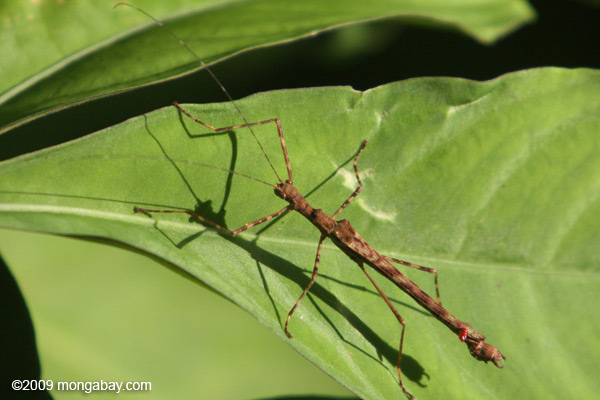 stick insectSome have cylindrical stick-like bodies, while others have a flattened, leaflike shape. The thorax is long in the winged species, since it houses the flight muscles, but is typically much shorter in the wingless forms. Where present, the first pair of wings are narrow and cornified, while the hind wings are broad, with straight longitudinal veins and multiple cross-veins. The body is often further modified to resemble vegetation, with ridges resembling leaf veins, bark-like tubercles, and other forms of camouflage. A few species, such as Carausius morosus, are even able to change their pigmentation to match their surroundings. Many species are wingless, or have reduced wings.[3] The mouthparts project out from the head. Chewing mandibles are uniform across species. The legs are typically long and slender, and some species are capable of limb autotomy.[3] They have long, slender antennae that are as long or longer than the length of the body in some species.
stick insectSome have cylindrical stick-like bodies, while others have a flattened, leaflike shape. The thorax is long in the winged species, since it houses the flight muscles, but is typically much shorter in the wingless forms. Where present, the first pair of wings are narrow and cornified, while the hind wings are broad, with straight longitudinal veins and multiple cross-veins. The body is often further modified to resemble vegetation, with ridges resembling leaf veins, bark-like tubercles, and other forms of camouflage. A few species, such as Carausius morosus, are even able to change their pigmentation to match their surroundings. Many species are wingless, or have reduced wings.[3] The mouthparts project out from the head. Chewing mandibles are uniform across species. The legs are typically long and slender, and some species are capable of limb autotomy.[3] They have long, slender antennae that are as long or longer than the length of the body in some species.All phasmids possess compound eyes, but ocelli are only found in some winged males.[3] Phasmids have an impressive visual system that allow them to perceive significant detail even in dim conditions, which suits their typically nocturnal lifestyle. They are born equipped with tiny compound eyes with a limited number of facets. As the insect grows through successive molts, the number of facets is increased along with the number of photoreceptor cells in the eye. The sensitivity of the adult eye is at least tenfold that of the first instar nymphs. As the eye grows more complex, the mechanisms to adapt to dark/light changes are also enhanced: eyes in dark conditions evidence less screening pigments, which would block light, than during the daytime, and changes in the width of the retinal layer to adapt to changes in available light are significantly more pronounced in adults. However, the larger size of the adult insect’s eyes makes them more prone to radiation damage. This explains why fully grown individuals are mostly nocturnal. Lessened sensitivity to light in the newly emerged insects helps them to escape from the leaf litter wherein they are hatched and move upward into the illuminated foliage. Young stick insects are diurnal feeders and will move around freely, expanding their foraging range.
Defense mechanismsPhasmatodea species exhibit mechanisms for defense from predators that both prevent an attack from happening in the first place (primary defense) and are deployed after an attack has been initiated (secondary defense).
The defense mechanism most readily identifiable with Phasmatodea is camouflage. Most phasmids are known for effectively replicating the forms of sticks and leaves, and the bodies of some species (such as O. macklotti and Palophus centaurus) are covered in mossy or lichenous outgrowths that supplement their disguise. Some species have the ability to change color as their surroundings shift (B. scabrinota, T. californica). In a further behavioral adaptation to supplement crypsis, a number of species have been noted to perform a rocking motion where the body is swayed from side to side that is thought to reflect the movement of leaves or twigs swaying in the breeze. Another method by which stick insects avoid predation and resemble twigs is by feigning death (catalepsy), where the insect enters a motionless state that can be maintained for a long period. The nocturnal feeding habits of adults also aids Phasmatodea in remaining concealed from predators.
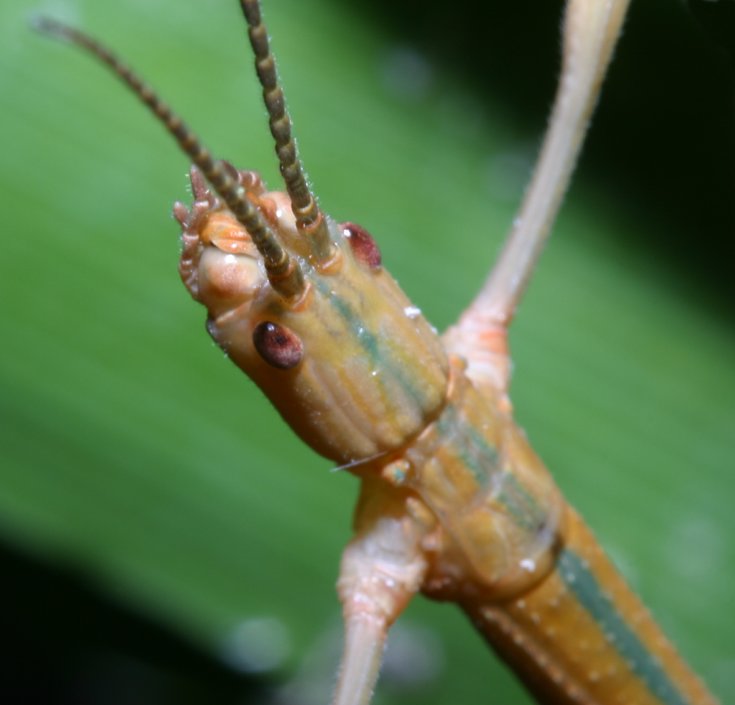 stick insect facts
stick insect facts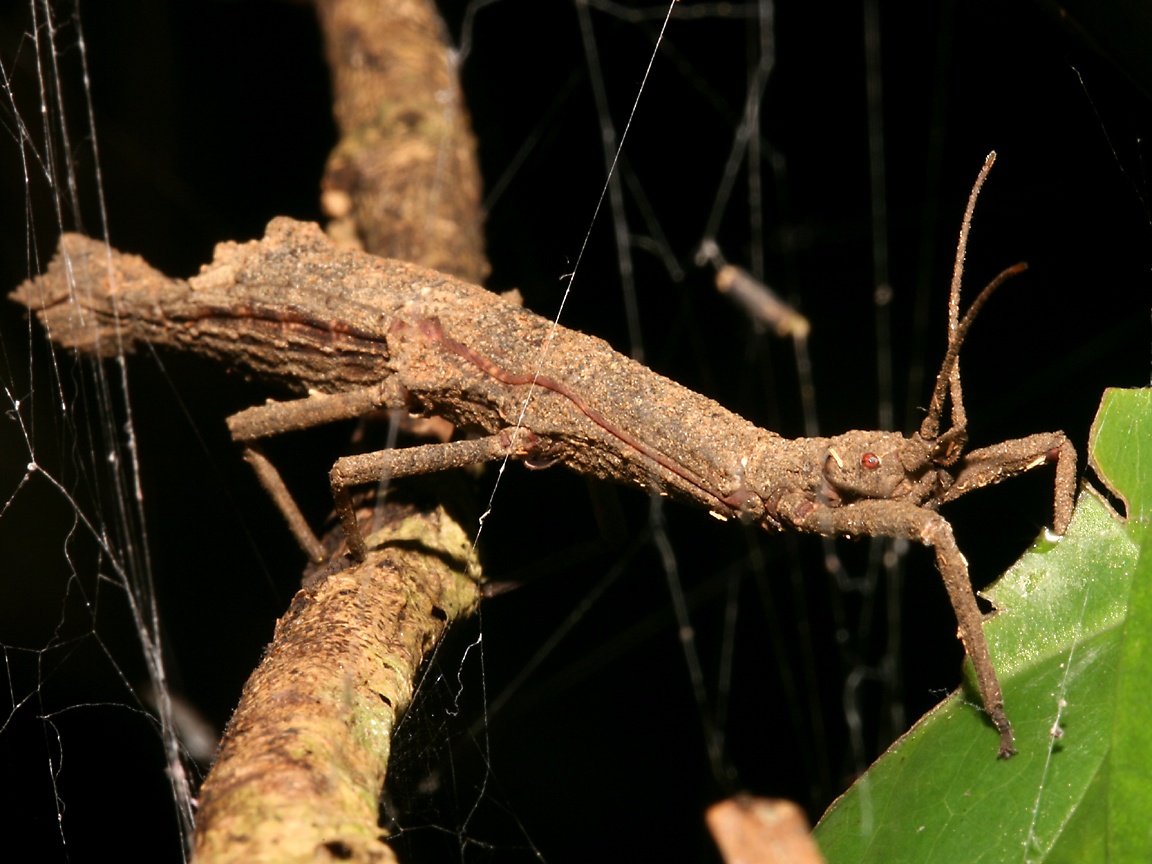 stick insect pictures
stick insect pictures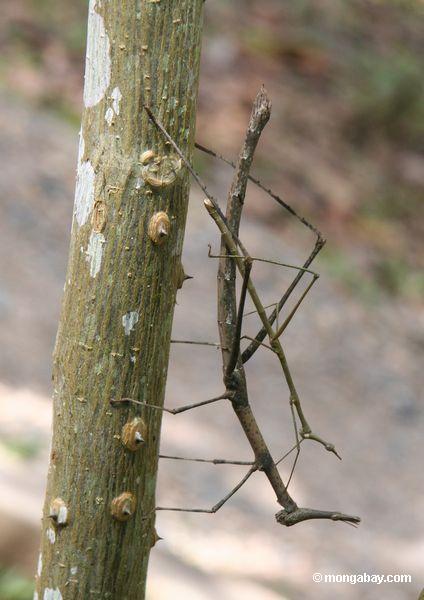 stick insect pictures
stick insect pictures stick insect green treeIn a seemingly opposite method of defense, many species of Phasmatodea will seek to startle the encroaching predator by flashing bright colors that are normally hidden and making a loud noise. When disturbed on a branch or foliage, some species, while dropping to the undergrowth to escape, will open their wings momentarily during free fall to display bright colors that disappear when the insect lands. Others will maintain their display for up to 20 minutes, hoping to frighten the predator and convey the appearance of a larger size. Some accompany the visual display with noise made by rubbing together parts of the wings or antennae.
stick insect green treeIn a seemingly opposite method of defense, many species of Phasmatodea will seek to startle the encroaching predator by flashing bright colors that are normally hidden and making a loud noise. When disturbed on a branch or foliage, some species, while dropping to the undergrowth to escape, will open their wings momentarily during free fall to display bright colors that disappear when the insect lands. Others will maintain their display for up to 20 minutes, hoping to frighten the predator and convey the appearance of a larger size. Some accompany the visual display with noise made by rubbing together parts of the wings or antennae.Some species, such as the young nymphs of E. tiaratum, have been observed to curl the abdomen upwards over the body and head to resemble ants or scorpions in an act of mimicry, another defense mechanism by which the insects avoid becoming prey.
When threatened, some phasmids that are equipped with femoral spines on the metathoracic legs (O. martini, Eurycantha calcarata, Eurycantha horrida, D. veiliei, D. covilleae) respond by curling the abdomen upward and repeatedly swinging the legs together, grasping at the threat. If the menace is caught, the spines can draw blood and inflict considerable pain.[5]
A number of species are equipped with a pair of glands at the anterior edge of the prothorax that enable the insect to release defensive secretions, including chemical compounds of varying effect: from the production of distinct odors to the causing of a stinging, burning sensation in the eyes and mouth of a predator. The spray often contains pungent-smelling volatile metabolites, thought to be concentrated in the insect from its plant food sources. The spray from one species, Megacrania nigrosulfurea, is even used as a treatment for skin infections by a tribe in Papua New Guinea because of its antibacterial constituents.[6] Some species employ a shorter-range defensive secretion, where individuals bleed reflexively through the joints of their legs and the seems of the exoskeleton when bothered, allowing the blood (hemolymph), which contains distasteful additives, to discourage predators. Stick insects, like their distant relation the grasshopper, can also discharge the contents of their stomach through vomiting when harassed, a fluid that is considered inedible by some predators.
 stick insect kissing
stick insect kissing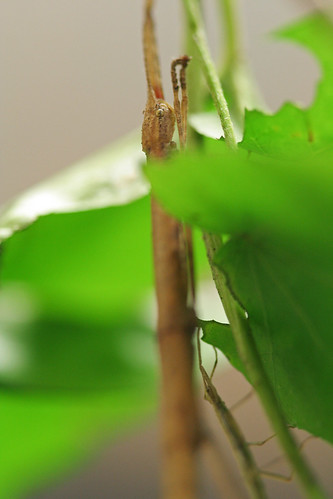 stick insect
stick insect stick insect
stick insect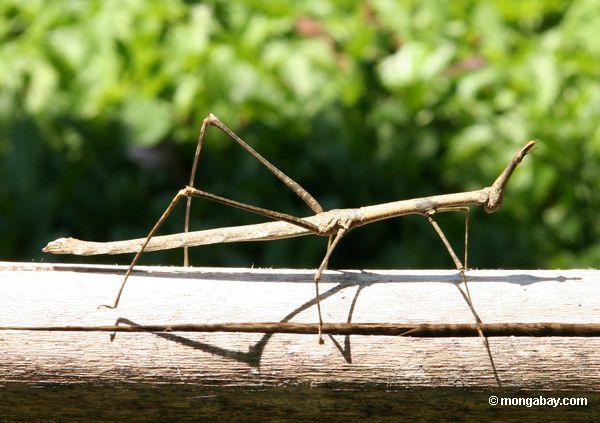 stick insect
stick insect stick insect attack on tree
stick insect attack on tree stick insect
stick insect stick insect
stick insect




































